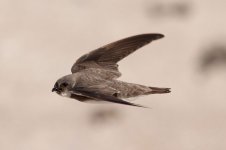Just a thought, in reality with whatever lens you have (trying to avoid the my make of lens is better than yours debate), as we are new to this, what do you think is the average length you use most with birds in flight.
When shooting stationery birds I want to get as close as possible so mainly 400 at f8 with flash, but in flight is 400mm truly a reality or more 200mm.
Thanks.
When shooting stationery birds I want to get as close as possible so mainly 400 at f8 with flash, but in flight is 400mm truly a reality or more 200mm.
Thanks.




